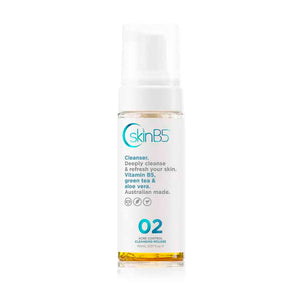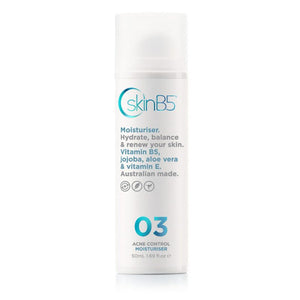How to Use a Cleansing Oil in Your Daily Skincare Routine
Posted by Jammy Justimbaste on
Oil cleansers have become a staple in many skincare routines, thanks to their gentle yet effective cleansing power. If you’ve ever wondered whether you can use a cleansing oil daily or how to properly use one, this guide is for you. In this article, we'll explore how cleansing oils work, when to use them, how to incorporate them into your daily skincare regimen, and which products to choose based on your skin type.
What Is a Cleansing Oil?
A cleansing oil is a type of facial cleanser formulated with oils that help dissolve makeup, sunscreen, excess sebum, and other oil-based impurities on the skin. Unlike foaming or gel cleansers that rely on surfactants to strip the skin of debris, oil cleansers work on the principle that "like dissolves like." This means that oils in the cleanser bind to oils on your skin, effectively lifting them away without compromising the skin barrier.
While traditional cleansers can leave the skin feeling tight and dry, oil cleansers are hydrating and suitable even for sensitive skin. They’re also a key component in the double cleansing method popularised by K-beauty routines.
Can You Use an Oil Cleanser Every Day?
Yes, you can use an oil cleanser every day. In fact, using a daily oil cleanser is not only safe but also beneficial for most skin types. Whether you’re searching "can I use oil cleanser everyday," or “should oil cleanser be used daily,” the answer is generally yes—especially if you wear makeup, sunscreen, or live in an urban environment with high pollution levels.
Oil cleansing is gentle and does not strip the skin of its natural moisture. For acne-prone or oily skin, it may seem counterintuitive to use oil, but a well-formulated, non-comedogenic oil cleanser can help balance the skin’s sebum production and reduce breakouts.
When to Use a Cleansing Oil in Your Skincare Routine
Cleansing oils can be used in both your morning and evening routines, though they are most commonly used in the evening to remove the day’s buildup of makeup, sunscreen, and pollutants.
For those following a double cleansing routine, the oil cleanser should be your first step. This is followed by a water-based cleanser, such as the SkinB5 Acne Control Cleanser, to remove any remaining impurities and leave the skin feeling fresh.
How to Use a Cleansing Oil: Step-by-Step Guide
Step 1 – Start With Dry Skin and Hands
Begin with dry hands and a dry face. This allows the oil to directly interact with the oil-based impurities on your skin.
Step 2 – Massage Into Skin
Pump a small amount of oil cleanser into your hands and gently massage it into your face for 30–60 seconds. Focus on areas that tend to be more congested, such as the T-zone or where you apply the most makeup.
Step 3 – Add Water to Emulsify
Wet your hands and continue massaging your face. The water will cause the oil to emulsify—turning it into a milky texture that lifts dirt and grime away easily.
Step 4 – Rinse Thoroughly and Pat Dry
Use lukewarm water to rinse your face thoroughly. Follow up by gently patting your skin dry with a clean towel.
Choosing the Right Daily Oil Cleanser
Choosing the best oil cleanser depends on your skin type:
- Dry Skin: Look for nourishing oils like avocado or almond.
- Oily Skin: Go for lightweight, non-comedogenic oils like jojoba or grapeseed.
- Sensitive Skin: Choose fragrance-free formulations with calming ingredients.
- Acne-Prone Skin: Use oil cleansers specifically designed not to clog pores. The SkinB5 Skin Purifying Mask used once or twice a week alongside your oil cleanser can also help keep breakouts at bay.
Is Daily Oil Cleansing Safe for Sensitive or Acne-Prone Skin?
Absolutely—when done right. Daily oil cleansing is generally safe even for those with sensitive or acne-prone skin. The key is to choose a formula that is non-comedogenic, free from synthetic fragrances, and tailored to your skin’s needs.
If you're new to oil cleansing or have very reactive skin, start by using it every second day and monitor how your skin responds before moving to daily use.
Common Mistakes to Avoid With Oil Cleansing
To get the best results, avoid these common oil cleansing pitfalls:
- Not emulsifying the oil with water before rinsing
- Using too much product, which can be hard to remove
- Skipping your second cleanse (if wearing makeup or SPF)
- Using oils that are too heavy for your skin type
- Not washing hands before application, which can introduce bacteria
FAQs
Do I still need to use a foaming or gel cleanser after oil cleansing?
Yes, especially if you wear makeup or SPF. Oil cleansing removes oil-based debris, while a water-based cleanser like the SkinB5 Acne Control Cleanser removes water-based impurities. This two-step process ensures your skin is thoroughly clean.
Can oil cleansers cause breakouts or clog pores?
Not if you're using the right product and technique. Always choose non-comedogenic oils and emulsify properly with water. Rinse thoroughly to avoid residue that can trap dirt.
Will oil cleansers leave my skin feeling greasy?
When emulsified and rinsed correctly, a good cleansing oil leaves no greasy film. Your skin should feel soft, clean, and balanced.
How long until I see results from using a daily oil cleanser?
You may notice softer, more hydrated skin almost immediately. Clearer pores and improved texture typically appear within 1–2 weeks of consistent use.
Whether you're a skincare beginner or looking to refine your current routine, adding a cleansing oil can elevate your results. With the right product and technique, daily oil cleansing can be a game-changer for healthy, radiant skin.



